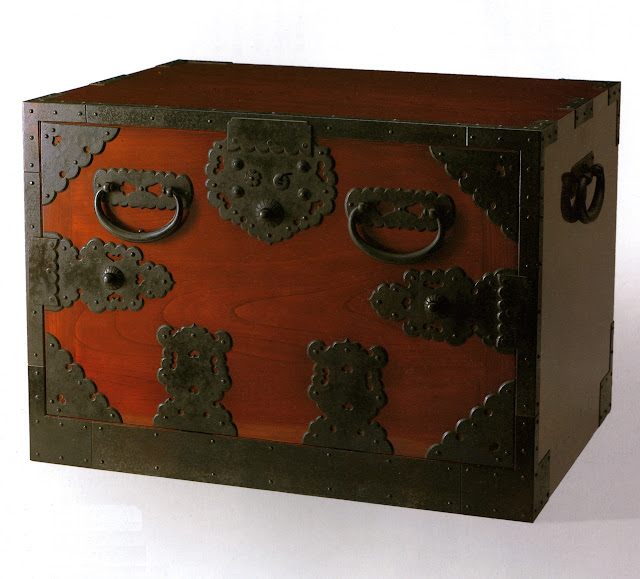Split
Given that there are only slight differences in trees and their wood across the world, it is not surprising that the tools and skills to split wood, for example, are very much the same. It is only the uses to which the timber is put that is different.
In England oak has traditionally been split to be used in buildings. It is not uncommon even now to come across an old barn where boards of split oak are exposed and have been “woven” one over the other to fill in the spaces between structural timbers. They were used as laths to be covered with an earth daub, finished with a lime plaster and painted with an ochre, salmon pink or white paint made from natural sources. In Japan, however, split timber is mainly used for craft items.
Rather like the random “happy accidents” which occur when firing pottery, split timber offers the woodworker a similar spontaneity. What they have to do is to make a choice on how to use and express the effect revealed by splitting the timber. It is certainly a matter of “working with the timber”—the timber contributes just as much to the work as the artist/craftsperson.
For Mitsuru Kurata, however, his demands on the wood are to a degree functional. He wants to bend the wood. The work begins with a large piece of timber. One of the preferred woods is hiba or asunaro.
Asunaro is used a good deal in Wajima but is especially good for bentwood items such as lunch or bento boxes, which will show off the quality of the wood and provide a bonus—a delicate aroma.
To split a trunk of Asunaro well, of course needs a skilled eye and hand. Metal wedges similar to the British cleaving tool called a froe but without a handle are used first to open the slightest of splits.
The first two metal wedges are hammered in.
 |
| Next to the rubber headed mallet is a small hand mallet. It is simply made from where a branch joins a main member and a handle is fashioned by parring away the wood, similar to ones used by foresters in the west. |
To drive the wedges deeper into the wood a weighty rubber mallet is used.
The metal wedges are followed by long wooden wedges.
The heavy rubber mallet is used to force the wedges in.
Finally the wood yields and is split in two.
Having split the wood so that the straight grain is exposed, strips of the right dimension need to be prepare.
Bend
As if performing some kind of slight of hand, Mitsuru clamps a bent ring of wood to form the side of a bento box.
Seated at the end of a work bench on the floor of his workshop, Mitsuru has everything he needs close at hand….and foot!
Using a draw plane he adjusts the thickness of the already thin timber strip that will form the side of the bento box.
A block of wood made to exact dimensions is used as a former around which the prepared strip of wood is bent.
His hands move swiftly and firmly to bend the strip around the former.
Having shaved the two ends of the strip so that they overlap perfectly, Mitsuru clamps the ends to form the oval side of the bento box.
A minimum of tools are required to make a bento box. The strips of wood for the sides and lid have a very straight grain, which helps when bending the wood. The clamps are hand made and held tightly together with a vine and straight U-shaped clip.
Something Mitsuru does not make much now is this large fisherman’s lunch box. The joins of the bent wood are reinforced with strips of cherry bark. Just like the bento box, it is a piece of everyday craft, or is it art?
Take a look at Mitsuru’s blog on which there are some more photographs.
Bill Tingey Photo © Copyright
Do feel free to pass on the address of this blog to anyone you think will be interested. Or share it on a social media site. Should you wish to leave a comment, please do so by clicking on the comment mark at the bottom left of this or any of the other posts. If you have found this blog interesting, why not become a follower. Thank you.































